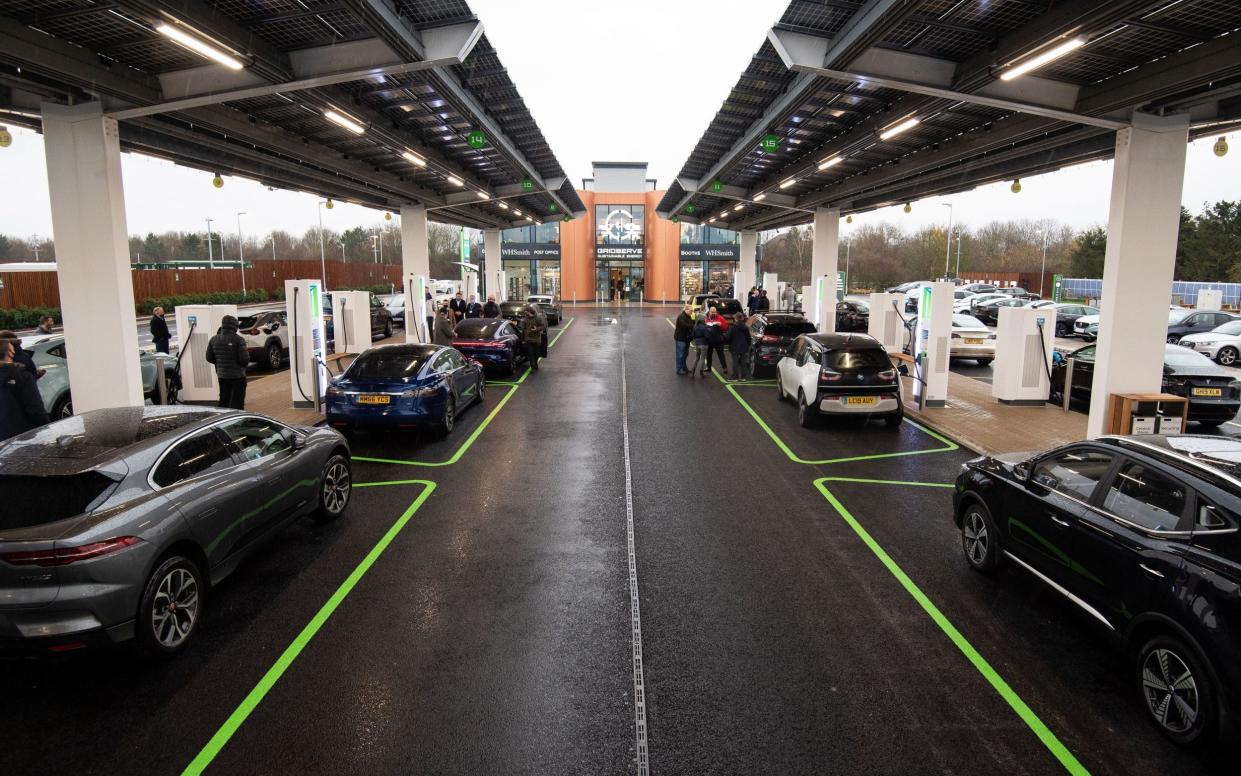Electric car revolution risks going flat unless rollout of chargers doubles in speed

The installation of electric car chargers needs to nearly double in speed to meet demand as petrol is phased out, figures suggest.
The UK has around 24,000 public electric chargers, with at least 230,000 needed by 2035 to allow drivers convenient access, according to the most conservative estimates, as experts warned that the Government’s green targets could be “undermined” if demand was not met.
Analysis by transport research group New AutoMotive also suggests that there are now more than 10 electric cars for every charger, exceeding the level recommended by the EU.
Last year, about 27 chargers were installed every day on average, a rate that needs to rise to at least 45.
Other organisations, including the Committee on Climate Change, which advises the Government, estimate that even more public chargers will be needed, with the highest estimates predicting 480,000 will be required by 2030, depending on how quickly people ditch their petrol and diesel cars.
New petrol and diesel cars are to be banned from sale from 2030, with plug-in hybrids following suit from 2035.
Ben Nelmes, head of policy at New AutoMotive, said: “If people who don’t have the ability to charge at home buy one [an electric car], they can’t get by because the charging infrastructure is not there, then it’s going to undermine the whole project, the whole mission to get to those 2030 and 2035 phase-out dates. So it’s really important.
“It’s not just the total number of chargers, they’ve got to be in the right place. A town only having two working charge points, compared to say, where I live in south London - they’ve just put another one in my street, and there’s one in the street next to me.
“That’s not right. They do need to be put in place so that everybody can benefit from buying an electric car because it’s car-dependent people who save the most money by switching to an electric car in fuel costs.”
In its report earlier this year, research group Transport & Environment said: “With too few chargers, utilisation rates will be good but drivers will struggle to find a convenient public charge point of the type they need.
“This is likely to lead to negative media coverage that will discourage new drivers buying a BEV (battery-electric vehicle) until 2035. Growing the number of chargers at the right speed is therefore essential.”
Rod Dennis, an RAC spokesman, said: “It’s vital that installations of new chargers keep pace with the numbers of electric vehicles going on to our roads, but having good charging infrastructure is about more than just the numbers – the speed and location of chargers are arguably even more important.
“For example, having plenty of slower chargers in places like shopping centres where drivers park for longer periods makes sense, but elsewhere a focus on rapid or even ultra-rapid units would be much more in drivers’ interests.”
A spokesman for the Department for Transport said: “The Government is investing £1.3 billion to accelerate the roll-out of our charging infrastructure over the next four years, and we have already installed 25,000 public charge points - including more than 4,700 rapid devices.
“Our new EV strategy, published later this year, will set out how we’ll work with councils and industry to build a world-leading system at pace.”

